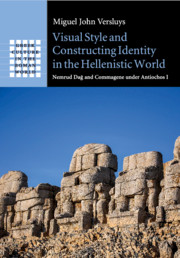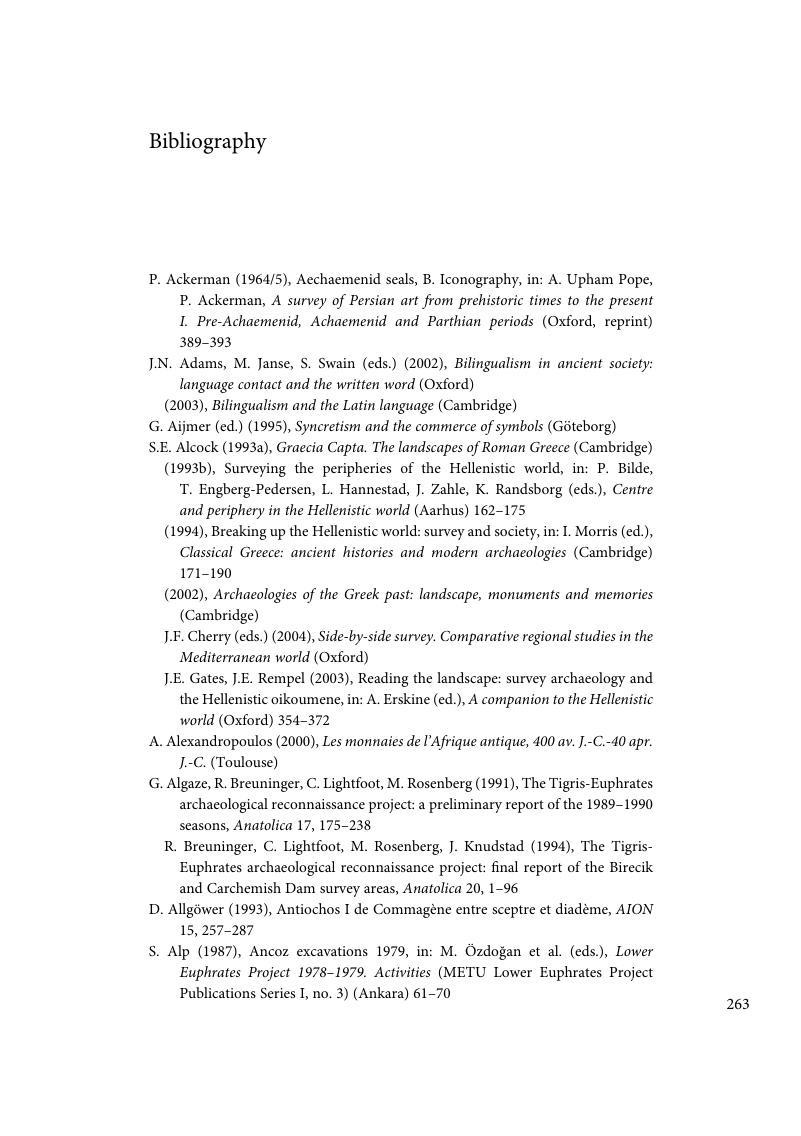 Visual Style and Constructing Identity in the Hellenistic World
Visual Style and Constructing Identity in the Hellenistic World Book contents
- Visual Style and Constructing Identity in the Hellenistic World
- Greek Culture in the Roman World
- Visual Style and Constructing Identity in the Hellenistic World
- Copyright page
- Dedication
- Contents
- Illustrations
- Preface
- 1 Approaching Nemrud Dağ
- 2 Commagene: A Historical Geography
- 3 Identity
- 4 Style
- 5 Postscript: Between East and West?
- Appendix: Antiochos’ Nomos: Translation
- References
- Bibliography
- Index
- References
Bibliography
Published online by Cambridge University Press: 17 June 2017
- Visual Style and Constructing Identity in the Hellenistic World
- Greek Culture in the Roman World
- Visual Style and Constructing Identity in the Hellenistic World
- Copyright page
- Dedication
- Contents
- Illustrations
- Preface
- 1 Approaching Nemrud Dağ
- 2 Commagene: A Historical Geography
- 3 Identity
- 4 Style
- 5 Postscript: Between East and West?
- Appendix: Antiochos’ Nomos: Translation
- References
- Bibliography
- Index
- References
Summary

Information
- Type
- Chapter
- Information
- Visual Style and Constructing Identity in the Hellenistic WorldNemrud Dağ and Commagene under Antiochos I, pp. 263 - 306Publisher: Cambridge University PressPrint publication year: 2017